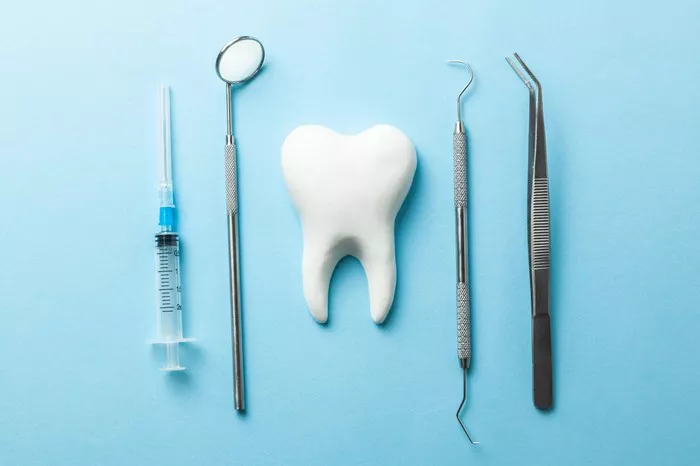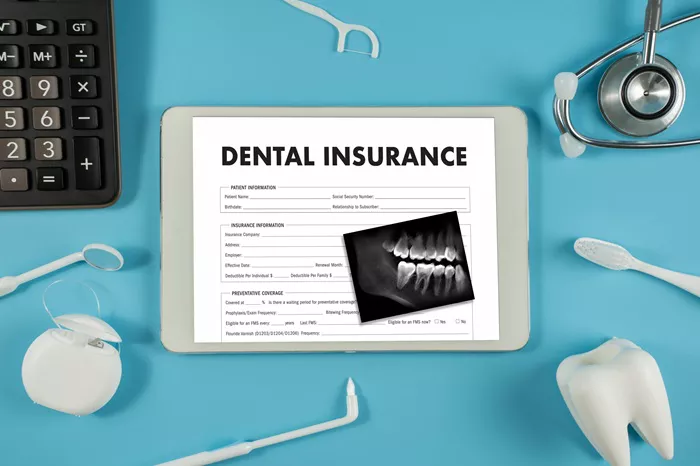Dental insurance is an essential component of healthcare for many individuals, providing coverage for routine check-ups, treatments, and emergency procedures. For some, particularly those with dual dental insurance, understanding how to maximize benefits and minimize out-of-pocket expenses can be complex. This article delves into the intricacies of dual coverage dental insurance, explaining its definition, the Coordination of Benefits (COB) process, impact on out-of-pocket costs, state laws, and potential limitations.
Definition of Dual Coverage
Dual dental coverage refers to a situation where an individual is covered by two separate dental insurance plans. This scenario often occurs in households where both partners have access to employer-provided insurance or when an individual holds multiple jobs that each offer dental benefits. For example, a married couple might each have their own dental insurance through their respective employers, providing them with dual coverage.
Dual coverage can be advantageous, offering a broader safety net for dental expenses. However, it requires careful management and understanding of how the two plans interact to avoid confusion and ensure optimal use of benefits.
Coordination of Benefits (COB)
The Coordination of Benefits (COB) is a crucial process in managing dual dental insurance. It determines the order in which the two insurance plans pay out claims. Here’s how it typically works:
Primary and Secondary Plans
When you have dual coverage, one plan is designated as the primary plan and the other as the secondary plan. The primary plan is the one that pays first on any claims. The secondary plan then considers the remaining costs that the primary plan did not cover.
Designation of Primary and Secondary Plans
The designation of which plan is primary and which is secondary follows a specific set of rules. These rules are designed to streamline the claims process and avoid duplicate payments.
Employee vs. Dependent Coverage: The plan covering the individual as an employee (or policyholder) is primary, and the plan covering them as a dependent is secondary.
Birthday Rule: For dependent children covered by both parents’ plans, the primary plan is usually determined by the birthday rule. This rule states that the plan of the parent whose birthday falls earlier in the calendar year is the primary plan.
Custody Arrangements: In cases of divorced or separated parents, the plan of the parent with custody is typically primary unless a court decree states otherwise. If joint custody is in place, the birthday rule or other specific terms outlined in the court decree will apply.
State-Specific Rules: Some states have additional rules or exceptions that might apply to the determination of primary and secondary plans.
Order of Payments
Once the primary and secondary plans are identified, the order of payments is as follows:
Primary Plan Payment: The primary insurance plan processes the claim and pays its share of the costs according to the terms of the policy.
Secondary Plan Payment: After the primary plan has paid, the secondary plan reviews the remaining costs and pays any eligible expenses that the primary plan did not cover, up to the limits of the secondary plan.
This process helps ensure that the insured maximizes their coverage benefits while preventing overpayment by the insurance companies.
see also: Do I Need Medical Insurance For Australia
Benefits Not Doubling
A common misconception about dual coverage is that it doubles the benefits. This is not the case. Dual coverage does not mean you receive double the benefits, such as getting twice the annual maximum or double the coverage for specific procedures. Instead, it allows for a better allocation of costs between the two insurance plans, potentially reducing out-of-pocket expenses.
Reducing Out-of-Pocket Costs
While dual coverage does not double the benefits, it can significantly reduce out-of-pocket costs. Here’s how:
Coverage Gaps: If the primary plan does not cover a particular procedure or service fully, the secondary plan can help cover the remaining costs.
Lower Copayments and Deductibles: The secondary plan can help pay for copayments, coinsurance, and deductibles required by the primary plan, reducing the amount the insured has to pay out-of-pocket.
Extended Coverage: Certain treatments or services that are only partially covered by the primary plan may be covered more fully when the secondary plan steps in.
By effectively using dual coverage, individuals can reduce the financial burden of dental treatments and ensure broader access to necessary dental care.
Out-of-Pocket Costs
Having dual coverage can significantly impact out-of-pocket expenses. Here’s a closer look at how it works:
Primary Plan Payment: The primary plan pays first, according to its terms and conditions. If the primary plan has a deductible, the insured must pay this amount before the plan starts to cover expenses.
Secondary Plan Payment: The secondary plan considers the amount paid by the primary plan and covers any remaining eligible expenses. This can include copayments, deductibles, and coinsurance not covered by the primary plan.
Sharing Treatment Costs
When it comes to sharing treatment costs between carriers, the secondary plan typically pays only after the primary plan has paid its share. The exact amount paid by the secondary plan depends on the specifics of both plans. It’s essential for policyholders to review their plan documents and speak with their insurance providers to understand how costs will be shared.
State Laws and Regulations
State laws and regulations can significantly affect how dual coverage works. Each state has its own rules regarding insurance practices, and these can influence everything from the designation of primary and secondary plans to the specific benefits covered.
Importance of Checking with Insurers
Given the variability in state laws, it’s crucial for individuals with dual coverage to check with their insurers for specifics. Here are a few points to consider:
Regulatory Differences: Some states have unique regulations that may affect coordination of benefits. For example, certain states might have laws that override the birthday rule or have specific guidelines for handling claims for children of divorced parents.
Plan-Specific Provisions: Insurance providers may have plan-specific rules that complement state regulations. Understanding these provisions can help policyholders maximize their benefits.
Consumer Protection: States often have consumer protection laws that safeguard policyholders’ rights and ensure transparency in how benefits are coordinated and claims are processed.
By staying informed about state-specific regulations and insurer provisions, policyholders can navigate dual coverage more effectively.
see also: What Is Insurance Annual Deductible
Limitations and Exclusions
While dual coverage offers many advantages, it’s important to be aware of common limitations and exclusions that might apply. These can include:
Specific Procedures
Certain procedures may not be covered by one or both plans. Common exclusions might include:
Cosmetic Dentistry: Procedures such as teeth whitening or veneers often have limited or no coverage under many dental plans.
Orthodontics: While some plans cover orthodontic treatments, there may be restrictions on the amount covered or the frequency of coverage.
Coverage Caps
Both primary and secondary plans might have annual maximums, which are the maximum amounts the plans will pay within a year. If the primary plan’s annual maximum is reached, the secondary plan may cover additional costs up to its own maximum.
Waiting Periods
Some dental plans have waiting periods for certain procedures, meaning the insured must wait a specified period before coverage begins. If both plans have waiting periods, this can affect the timing of when benefits are available.
Plan Exclusions
Each plan has its own set of exclusions, which are services not covered under the policy. It’s essential to review both plans’ exclusions to understand what services might not be covered at all.
Coordination of Benefits Limitations
The coordination of benefits itself can have limitations. For example, the secondary plan might only cover the amount up to what it would have paid if it were the primary plan, rather than covering the full remaining balance after the primary plan has paid.
Conclusion
Dual coverage dental insurance can be a valuable asset, providing a broader safety net and potentially reducing out-of-pocket expenses for dental care. Understanding the intricacies of coordination of benefits, recognizing that benefits do not double, and being aware of state laws and common exclusions are key to maximizing the advantages of dual coverage. By staying informed and communicating with insurance providers, policyholders can effectively manage their dual dental insurance and ensure comprehensive coverage for their dental health needs.
Navigating the complexities of dual coverage requires a proactive approach, including regular reviews of both plans, understanding the specifics of primary and secondary coverage, and staying informed about regulatory changes. With this knowledge, individuals can make the most of their dental insurance benefits, ensuring they receive the best possible care with minimal financial strain.
FAQs about Dual Dental Insurance
1. What is a dual dental plan?
A dual dental plan, often referred to as dual dental coverage, is when an individual has dental insurance coverage from two different insurance providers. This can occur when a person is covered by their own employer’s dental plan and also covered as a dependent under a spouse’s or partner’s plan.
2. What is dual coverage?
Dual coverage is a situation where an individual is covered by more than one dental insurance policy. This often happens in families where both spouses or partners have their own dental insurance policies, and each person is listed as a dependent on the other’s plan. Dual coverage aims to provide a broader range of benefits and reduce out-of-pocket costs for dental services.
3. How does double dental insurance work in California?
In California, as in other states, double dental insurance works through a coordination of benefits (COB) process. Here’s how it typically functions:
Primary and Secondary Insurance: The insurance companies determine which policy is primary and which is secondary. The primary insurance is billed first, and once it has paid its portion of the claim, the secondary insurance is billed for the remaining balance, according to its coverage limits.
No Duplication of Benefits: While dual coverage can reduce out-of-pocket expenses, it doesn’t mean you will get double the benefits. Instead, the secondary insurance covers what the primary insurance does not, up to the allowable amount defined in the policy.
Example: If a dental procedure costs $1,000 and the primary insurance covers 70% ($700), the remaining $300 can be submitted to the secondary insurance. If the secondary insurance also covers 70%, it might cover part or all of the remaining $300, depending on its terms.
Coordination Rules: California has specific rules to prevent over-insurance and ensure fair handling of claims. The coordination of benefits rules can vary slightly between insurance providers.
4. Who is the largest dental insurance company?
The largest dental insurance company in the United States is Delta Dental. Delta Dental is a network of independent dental service corporations that provide coverage to over 80 million people across the nation. They have a broad network of dentists and offer a variety of plans, making them a significant player in the dental insurance market.
You Might Be Interested In





















